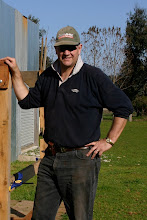
In episode 2 we managed to make quite a lot of (theoretical) progress by committing to selling our meat direct to consumers. Like a lot of things - supermarkets seem to me to be something that might have once had some logic and benefit, but are now now riddled with dis-benefits and dependent on market power to maintain their position.
I suspect (and hope) they're actually ripe to lose market share. I quite like the idea that, after decades during which supermarkets have ruthlessly shortened the supply chain and then squeezed producers without regard to sustainability, that conditions are developing where it will be possible to 'disintermediate' them.
But episode 3 is going to go in a different direction - to paddock 60 - wherein we have established our trufferie.
I have to say I've noticed more than a little scepticism in the eyes of a number of people when I've said we are developing a trufferie. Truffles seem to have a bad rep.
I've seen forecasts that say there is a reasonable financial return, but I've also prepared financial forecasts as part of what I do professionally. Discounted cash flow (DCF) analysis strikes me as a thoroughly inappropriate way of determining whether to invest in many (if not most) agricultural projects. The timeframes are simply too long and the revenue streams too uncertain to make the result of an DCF analysis any better than just a careful consideration of 4 things:
- the amount to be invested;
- what must be done well to produce a good crop - and can it be done;
- the net revenue outcome of such a crop - using current market prices and current costs; and
- the fundamentals in the marketplace that might affect costs and prices in the future.
In fact a DCF analysis is quite a good way to mislead investors in an uncertain environment - as MIS promoters have shown over the last 10 years.
Applying this framework (which is what I did), I'm comfortable with the truffle investment. I also know 2 other things:
- For the whole of the period to maturity, the trufferie will add at least its investment cost to the capital value of the farm - were we to sell it; and
- Even if it turns out that there are no truffles, I'll have had a heap of fun trying - and more than enough fun to justify the the investment cost in my mind.
If I assume that we do produce truffles (which is not certain) - but take a reasonably modest view of mature yield at current market prices, the trufferie should enable me to fill in 3 more squares.





No comments:
Post a Comment